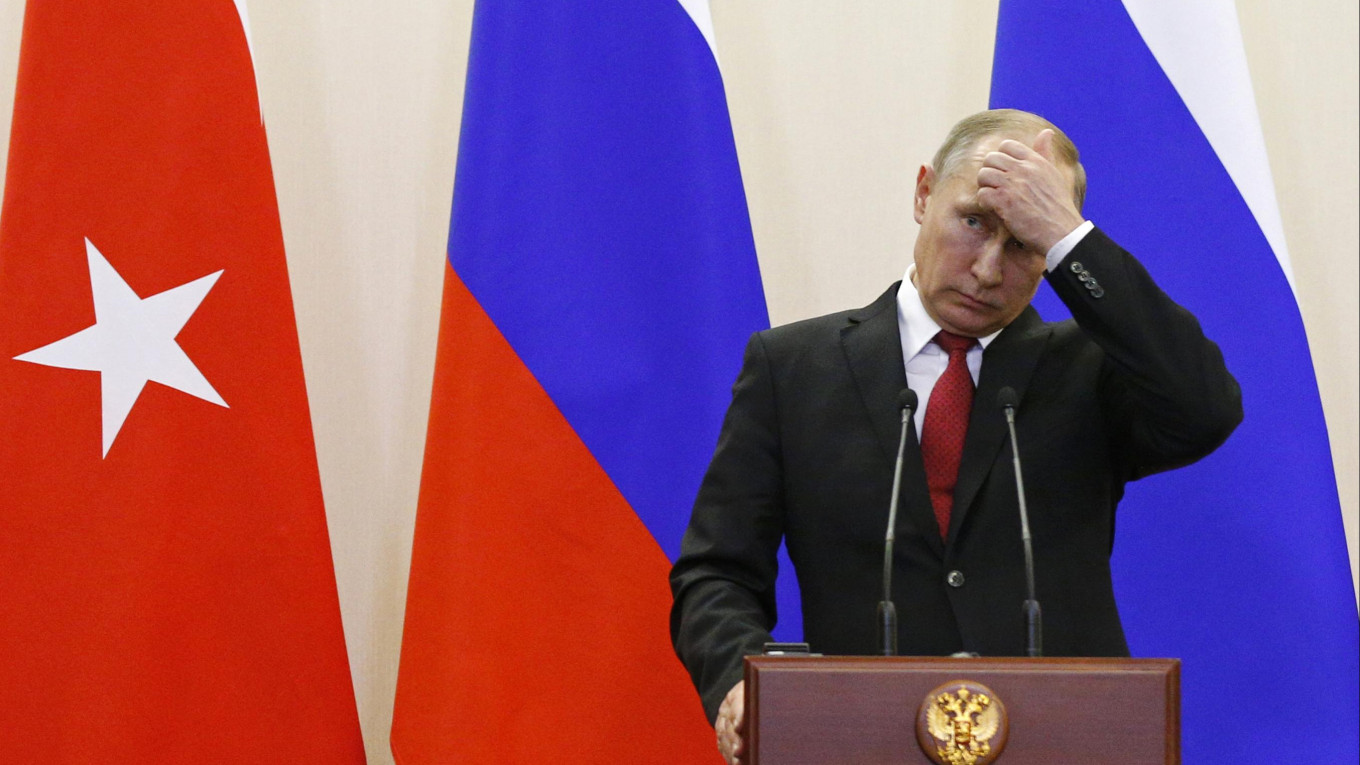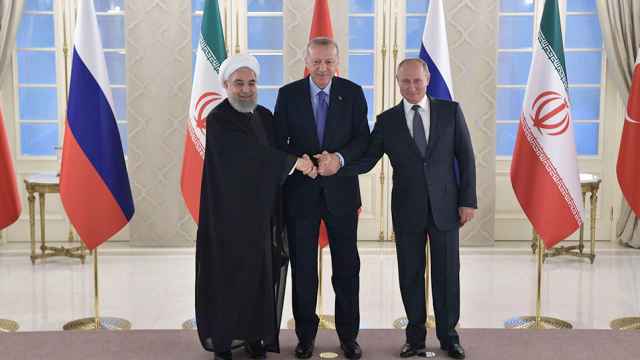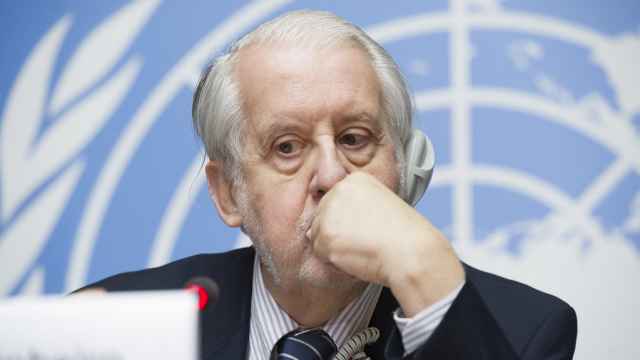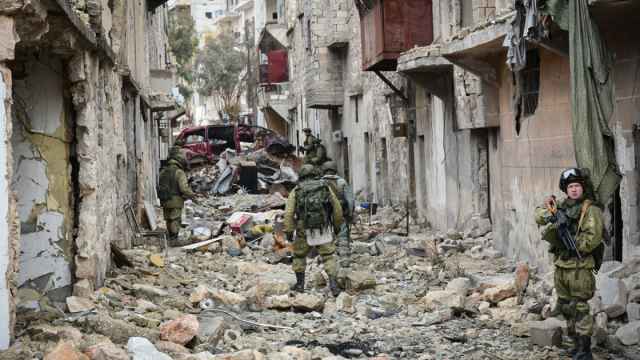Russia’s military intervention in Syria has paid important foreign and domestic policy returns for the Kremlin.
The Kremlin has demonstrated that it is willing and able to project military force well beyond its immediate neighborhood. It has complicated the military mission of the U.S. and its coalition allies in Syria, and increased pressure on Europe by adding to the flow of refugees. It has made Russia a geopolitical player in the Middle East, and has contributed to the deepening rift between Turkey and its NATO allies. Finally, it has helped solidify Putin’s popularity at home.
But, with the possible exception of Turkey’s geopolitical reorientation, these gains will likely to prove temporary. The Syrian war has been devastating, and Russia is now the patron of a weak, unstable, and impoverished state far from its core Eurasian interests.
The war has resulted in over 400,000 deaths, 6.3 million internally displaced persons and 5 million refugees in neighboring countries. Much of Aleppo, Homs, Hama, and parts of Damascus have been destroyed, and Raqqa is likely to suffer a similar fate in the coming months. Damascus has lost control of most of the country’s northeast, where Syria’s agricultural production is concentrated, as well as most oil and gas fields in the Euphrates Valley.
Russia’s intervention has kept a client state in its camp. But Syria is now a very weak and precarious state that will need military and economic support when the war finally ends.
That, unfortunately, will not happen soon, despite efforts by Russia or any other outside powers to arrange a political settlement. Lines of control among the numerous combatants are very muddled. This makes a general ceasefire highly unlikely, and there is no prospect of a ceasefire with the many jihadist and jihadist-leaning groups among the rebels.
Furthermore, Damascus’s military position remains precarious, despite its territorial gains. It has serious manpower problems, there is no firm chain of command for its various elements, and the Iranians, Hezbollah, and other allied combatants don’t answer to Assad. While there has been some consolidation among rebel forces over the past year, they remain splintered and increasingly dominated by jihadi groups. Finally, outside powers — including the United States, its European and Gulf States allies, and indeed Turkey — are unlikely to support a political settlement that is acceptable to Damascus, Moscow, and Teheran. This means that arms will continue to flow into Syria for the foreseeable future.
Despite all this, there is almost no chance that the Kremlin will consider changing course in Syria before Russia’s presidential elections in March 2018. At that point, however, Putin and his advisers may start to wonder if the long-term costs of Russia’s military operations in Syria outweigh the benefits. Those costs are already significant. The intervention has made a rapprochement with the West all the more difficult, and has put Assad (or his successor) in a position to derail a possible Trump-Putin “reset” through mass-casualty chemical weapons attacks. It has also elevated Russia in the hierarchy of Sunni jihadists’ enemies and led many moderate Sunnis to conclude that Russia is on the side of Iran and its Shi’a allies.
The intervention entails other risks for Putin going forward. In particular, the United States may decide to challenge the Russian military in Syria. Russia has a preponderance of force along its western borders (with the possible exception of Kaliningrad), but it is exposed in Syria and the eastern Mediterranean, as the recent American missile strikes made clear. It has talked up its S-400 and S-300 air defense systems, but those systems cannot defend the bulk of the territory currently controlled by Damascus and its allies against cruise missiles or U.S. fifth-generation stealth aircraft.
Thus, the United States has escalation dominance in Syria. This means Trump could theoretically embarrass Putin politically by ordering U.S. strikes on Syrian military assets at a time and place of his choosing, even at the risk of killing or injuring Russian military personnel or civilians.
Another risk is that, should Russia witness a surge in jihadist militancy or terrorism at home, the public might blame the Syria intervention. Public support for the war is already limited. A survey carried out by the Levada Center in October indicated that 16% of respondents were “fully positive” and 36% were “probably positive” about Russia’s military operations in Syria. This is considerably lower than support for Putin (82%). A spike in terrorist activity, particularly if carried out by Islamists returning from the battlefields of Syria or Iraq, would undermine the Kremlin’s argument that it is better to fight Islamists abroad than at home. That, in turn, may undermine support for the intervention and, perhaps, eventually for Putin himself.
Finally, Russia faces an “interest asymmetry” problem in Syria. The country is relatively distant from Russia and. Russian-Syrian trade was never significant. Moscow is in no position to help rebuild the Syrian economy, and Russia’s refueling facilities in Tartus aren’t critical to Russian operations in the Mediterranean (which are themselves of limited importance to Russian economic or core security interests). Finally, Russians have no particular historical or cultural affinity with Syrians. American, European, Iranian, and Turkish economic and security interests in Syria are considerably greater.
This asymmetry of interests may prove a serious problem if, as expected, the Russian economy continues to struggle in the coming years. Putin is still very popular, but the government and his regime are not. The Russian public resents what it sees as an undeserving and greedy elite, official corruption, and crony capitalism — attributes of the current order that opposition leader Alexei Navalny has exploited relentlessly. Declining living standards may lead Russians to wonder why the Kremlin is involved a conflict that is far from Russia’s shores and with no clear exit option.
Navalny is already exploiting skepticism about Russia’s role in Syria, as he made clear in a recent interview with The Guardian: “I tell them: ‘OK great, so Putin is promising to rebuild Palmyra, but why don’t you look at the roads in your city?’”
In short, Moscow’s problem in Syria is not unlike Washington’s in Afghanistan and Iraq, albeit on a smaller scale. Despite thousands of lives lost and trillions of dollars spent, there are still 8,400 U.S. troops in Afghanistan, 7,000 in Iraq, and 1,000 in Syria. And in all three theaters, Washington is more likely to increase troop numbers than decrease them in the coming months. Even so, there is no prospect of anything that feels like “victory” to most Americans.
When the Kremlin comes up for breath after March 2018, it may well conclude that entering a forever war in the Middle East was much easier than staying in or getting out.
Edward W. Walker is Adjunct Associate Professor in the Department of Political Science at the University of California, Berkeley.
A Message from The Moscow Times:
Dear readers,
We are facing unprecedented challenges. Russia's Prosecutor General's Office has designated The Moscow Times as an "undesirable" organization, criminalizing our work and putting our staff at risk of prosecution. This follows our earlier unjust labeling as a "foreign agent."
These actions are direct attempts to silence independent journalism in Russia. The authorities claim our work "discredits the decisions of the Russian leadership." We see things differently: we strive to provide accurate, unbiased reporting on Russia.
We, the journalists of The Moscow Times, refuse to be silenced. But to continue our work, we need your help.
Your support, no matter how small, makes a world of difference. If you can, please support us monthly starting from just $2. It's quick to set up, and every contribution makes a significant impact.
By supporting The Moscow Times, you're defending open, independent journalism in the face of repression. Thank you for standing with us.
Remind me later.






